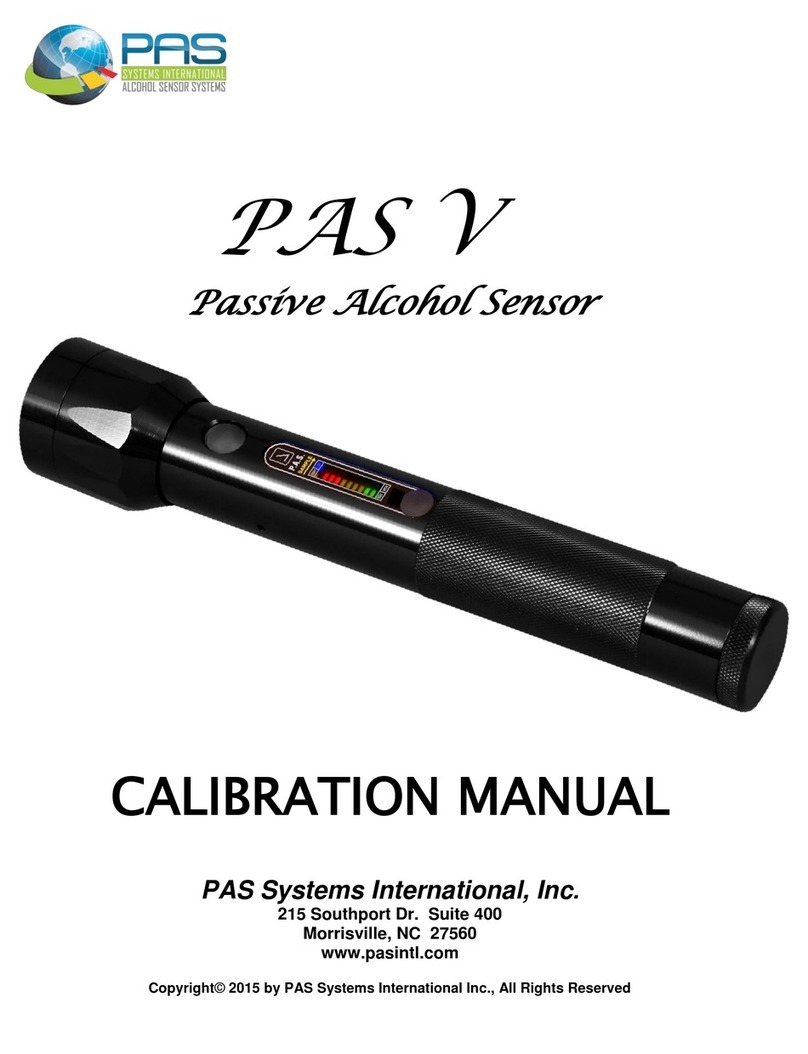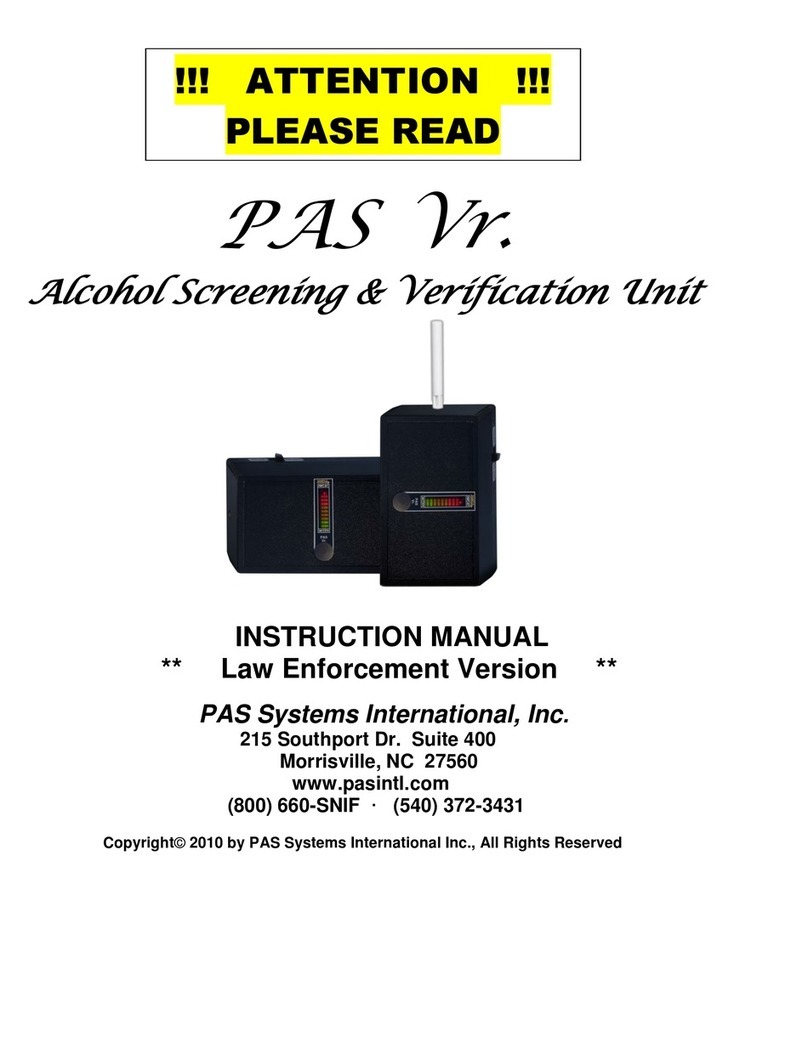INTRODUCTION
The PAS V Alcohol Screening System combines: a) high-intensity, 3-Mode LED flashlight
with b) a dynamic sampling system and c) a miniature alcohol sensor. It "sniffs" ambient air,
the breath, open containers, or enclosed spaces for the presence of alcohol, functioning as a
non-intrusive "extension of the operator's nose. "
The PAS V is used to check alcohol presence/absence with or without a subject's direct
participation. When used without the subject's direct participation it's known as passive
sampling, as opposed to active testing where the subject blows directly into a mouthpiece or
the intake port.
The passive alcohol sensor was developed from prototype sensing devices that had been
produced to specifications proposed by the Insurance Institute for Highway Safety.
The PAS V is designed specifically for use by law enforcement, correctional institutions, and
security personnel. It can be operated with one hand, leaving the other completely free. The
instrument is easy to use and has been designed to withstand the physical conditions
experienced in operational situations. It is resistant to adverse weather conditions and
mechanical shocks. Despite its rugged construction and appearance, the PAS V is no heavier
than an equivalent flashlight. It is well-balanced and comfortable to use for several hours at a
time.
The device has been extensively tested by police in the United States under field conditions.
During these trials carried out by traffic patrols at random checkpoints, use of the instrument
led to an increased number of arrests for Driving While Intoxicated, with the added advantage
of reducing the number of false arrests over conventional sobriety tests.
Further information regarding this precision instrument or its use in screening subjects for the
presence of alcohol can be obtained by calling 1-800-660-SNIF
(1-800-660-7643).
HOW THE PAS V WORKS
When you use the PAS V, a small, silent pump draws an air sample through a fuel cell
(electrochemical), which generates a small electrical current in the presence of alcohol vapor.
This current is amplified electronically and used to drive a multicolored bar-graph display.
The number of bars lit in the display indicates the presence of alcohol in the air sample.
A NiMH rechargeable battery (no memory) powers the PAS V. Battery life per charge depends
on the mode of light beam being used. Operating on High Power will provide 65 minutes of
continuous use per charge while operating on Low will provide 190 minutes. An integrated fast
charger is provided so that the unit can be ready for use at all times. The charger can be
plugged into either 12-volt automotive power or 110 vac @ 60 Hz. power source. The AC/DC
Charging System has been introduced to make in-vehicle charging more convenient, while
securing the device in the vehicle.
We want you to get the best possible results from your PAS V. Please take the time to study
this manual and to practice using the instrument before depending on it under real-life
conditions.































